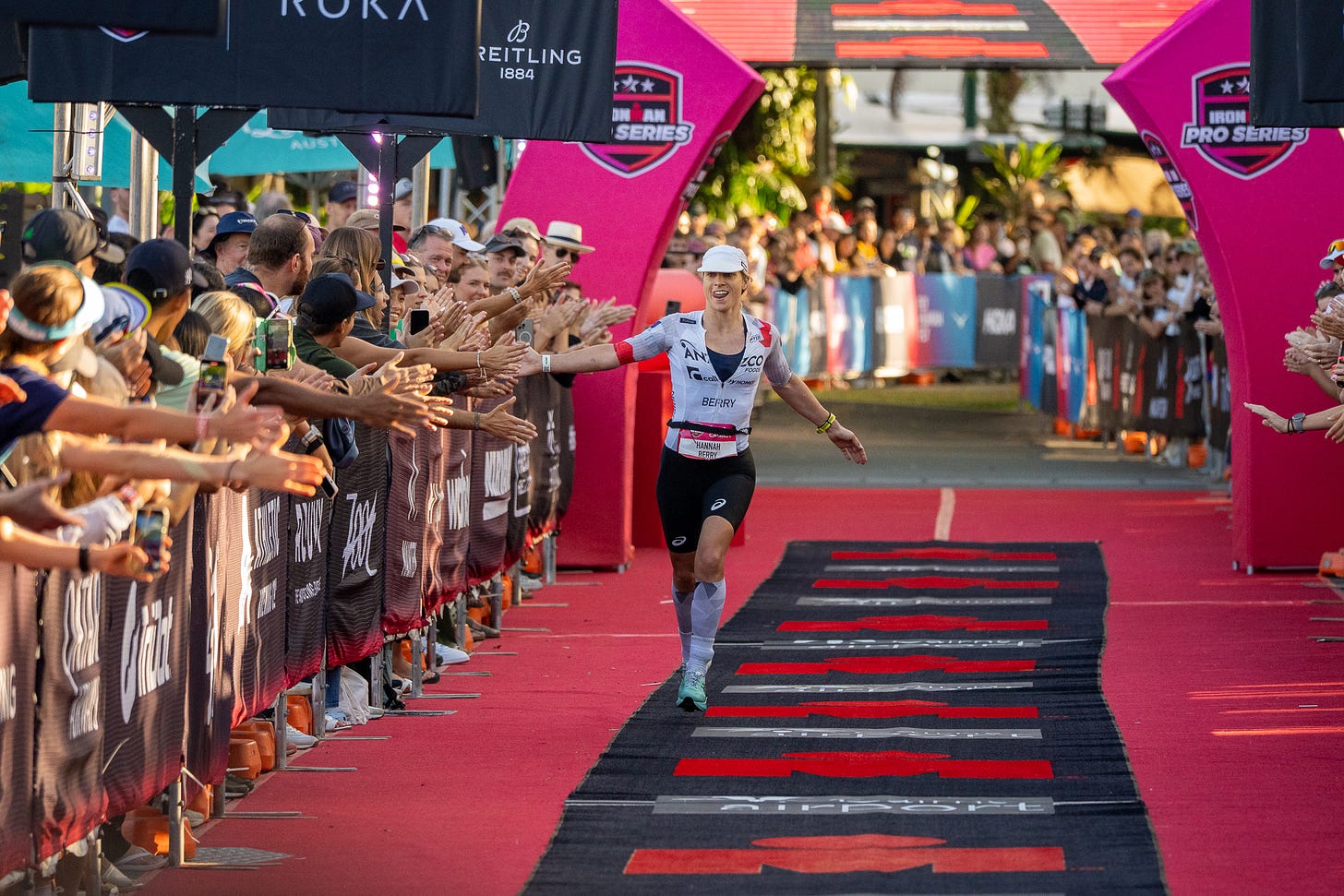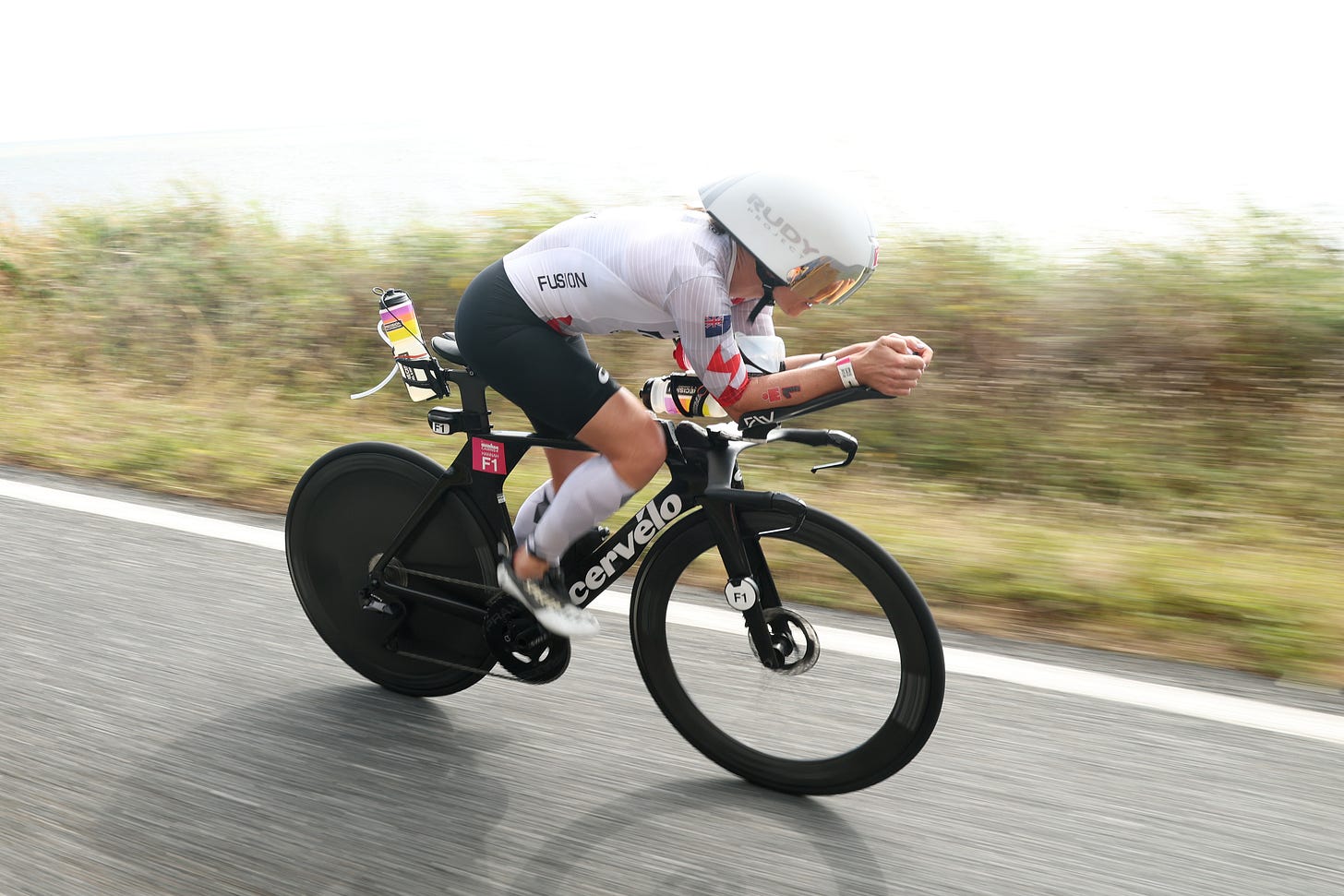While I wasn’t able to defend my title, I’m still very happy with how the race played out and especially with ticking off a Kona slot. I did make a few mistakes early on that cost some time and perhaps shifted the race dynamics a little, but there were also plenty of positives to take away—most notably, a run PB and what I felt was my strongest IRONMAN finish to date.
This year brought classic Cairns conditions: that trademark headwind on the ride back made the bike leg tougher than last year. But on the flip side, the wind helped keep the overall temps down, and I didn’t feel hot once all day—unlike last year where I noticed the heat in every discipline.
I won’t go into full race details here (you can check my social media for a quick rundown if you missed it), but I thought I’d share some insights into the training block leading into Cairns and what’s next on the calendar.
IRONMAN Cairns Training Block
My last IRONMAN was the World Champs in Nice back in September, so after months of focusing on middle-distance racing, I needed to re-shift my focus to IRONMAN-specific pace and power.
There were 10 weeks between T100 Singapore and Cairns. With one recovery week post-Singapore and a taper week for Cairns, that left 8 key training weeks—a good window to get some solid IRONMAN-specific work in.
During this period, my average weekly volume was just over 24 hours, including gym work. My biggest week hit 29 hours, with the lightest at 17 hours. Longest run: 31km, and longest ride: 155km.
The standout gain came on the run—clocking a PB of 3:01:30 for the marathon. I put this down to consistency more than anything—no huge changes in run volume or intensity, but rather steady work over the last year. I repeated a lot of the same run sessions from last year, which gave me some great comparative data on lactate and HR—seeing subtle but meaningful improvements. Over those 8 weeks, I averaged 58km running/week, peaking at 79km.
For an IRONMAN build, these numbers are probably on the lighter side for a pro. No doubt there’ll be some bigger weeks heading into Kona later this year, but it’s been really rewarding to see progress and results come from simply staying consistent.
Consistency might not look as impressive as big “hero” training weeks or sessions often shared on social media—but often, it’s the quieter, steady work that builds long-term gains. Aside from a few missed sessions due to a cold mid-block, I got through everything as planned, never felt overly fatigued, and was able to absorb the work well.
What’s Next?
After a short recovery, training will ramp back up with a renewed focus on middle-distance racing. I’m targeting the T100 races in London, Fréjus, and Valencia through August and September. I really enjoy the “spicy” nature of middle-distance training, and I’m excited to get back to those punchier sessions.
For now though, I’m enjoying a few days of proper downtime—no swim, bike, or run—to recharge the batteries before the next big block kicks off.
Thank You
Massive thanks to my sponsors for their continued support:
ANZCO Foods, Calley Homes, ASICS NZ, and Fusion Clothing. I’m excited to represent you at the IRONMAN World Championship in Kona this October and through the rest of the T100 season.
I’d also like to extend a big thank you to MitoQ, who have been part of my journey for several years. As our partnership comes to an end, I’m truly grateful for the support and proud of what we achieved together. I’ll be following MitoQ’s ongoing R&D with interest and wish them all the best moving forward.
And lastly—thank you all for reading!
Got any questions or topics you'd like me to dive into? Drop a comment and let me know.
Calley Homes are a multi award winning building and construction company based out of Mount Maunganui (my home town). Calley Homes specialise in creating unique homes crafted with excellence, expertise and vision. I’m proud to represent Calley Homes and am thankful for their support in 2025. Clink the banner below to browse some of their projects across NZ:






